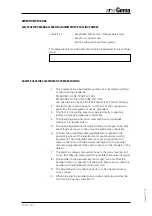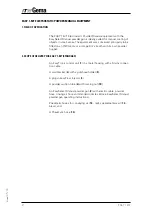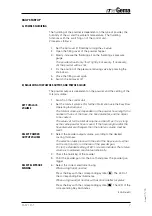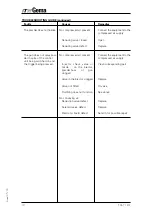
5
EASY 1-MT
Issued 05/00
The operating panel of the EasyTronic control unit consists of 4 main
areas:
Diagnosis LEDs, Displays, "+/–" Keys, and Function keys.
1. The
Diagnostic LEDs
1 – 8 serve to show the status of the
equipment, and equipment faults. Detailed information is found in
Chapter "Troubleshooting guide".
2. There are two
Displays
with whose help the following values are
displayed:
•
Powder output
(Setting range 0 - 100 %) Powder output in
% always refers to the max. possible output volume to the
total air volume setting.
•
Total air volume
(Setting range 1.6 - 6.0 Nm
3
/h)
3. The
Keys "+"
and
"–"
are for setting the powder output, and the
total air volume used.
If the Key is pressed once, the value is increased or decreases,
respectively, by one step. If the Key is pressed continuously, the
setting change rapidly.
4. The
Function keys
have the
following functions:
•
Electrode rinsing air for flat jet nozzles
•
Electrode rinsing air for round jet nozzles
When a Key is pressed once, the corresponding function is
activated, and the corresponding LED illuminates.
If a Key with an illuminated LED is pressed for longer than 1
second, the function is deactivated.
ITW Gema recommends leaving the electrode rinsing air
switched on, but can, however, remain switched off with
application with very small amounts of powder.
•
Application keys:
With these keys the electrostatic (High-
voltage, and current) are automatically set so that the setting
for the selected application is the optimum.
– Settings for flat parts
– Settings for complicated parts with depressions
– Settings for coating parts already coated
The High-voltage and current can be deactivated when the
appropriate key is pressed for more than 1 second when the
LED illuminates
The EasyTronic control unit is switched on and off with a
Push button
.
If the equipment is switched on, the yellow lamp is illuminated.
When the equipment is first switched on the preselected factory
settings displayed:
60%
4.0 Nm
3
/h
Flat jet rinsing Complicated parts
After switching the equipment off (also when the equipment is discon-
nected from the Mains) the actual settings are retained.
EASYTRONIC CONTROL UNIT
Figure 3










































